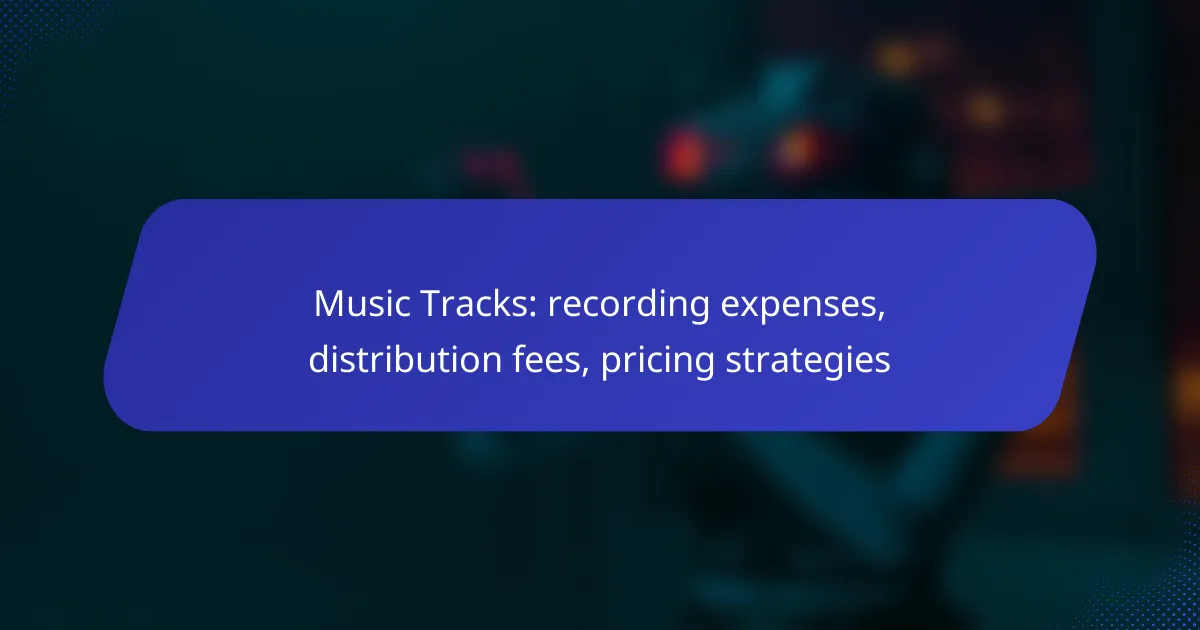The landscape of online courses is shaped by various factors, including development expenses, pricing models, and market demand. Development costs can fluctuate based on course complexity and necessary resources, while pricing strategies such as subscriptions and one-time payments cater to diverse learner needs. With a growing demand for flexible education options, online courses have become an essential tool for individuals seeking to enhance their skills and advance their careers.

What are the development expenses for online courses in the UK?
Development expenses for online courses in the UK can vary significantly based on the course’s complexity and the resources used. Key costs include content creation, platform fees, marketing expenses, technical support, and licensing or compliance fees.
Content creation costs
Content creation costs encompass expenses related to developing course materials, such as videos, quizzes, and written content. Depending on the quality and expertise required, these costs can range from a few hundred to several thousand pounds.
Utilizing freelance professionals or agencies can increase expenses, while leveraging in-house resources might reduce costs. Consider the balance between quality and budget when planning your content creation.
Platform fees
Platform fees refer to the charges associated with hosting your online course on a learning management system (LMS) or marketplace. These fees can be structured as monthly subscriptions, per-course charges, or a percentage of sales.
In the UK, popular platforms like Teachable or Thinkific may charge between £30 to £300 monthly, while others like Udemy take a commission on sales. Evaluate the pricing model that best aligns with your revenue goals.
Marketing expenses
Marketing expenses are crucial for attracting students to your online course. These costs can include social media advertising, email marketing, and search engine optimization (SEO).
On average, budgeting around 10-20% of your projected revenue for marketing can be a good starting point. Consider using low-cost strategies like content marketing or partnerships to maximize reach without overspending.
Technical support costs
Technical support costs involve expenses related to maintaining the course platform and assisting users with technical issues. This may include hiring IT personnel or subscribing to support services.
Depending on the complexity of the course and the platform used, these costs can range from a few hundred to several thousand pounds annually. Ensure you have a plan for addressing technical issues to enhance user experience.
Licensing and compliance fees
Licensing and compliance fees are necessary for ensuring that your course adheres to legal and educational standards. This may involve obtaining licenses for copyrighted materials or ensuring compliance with data protection regulations.
Costs can vary widely based on the nature of the content and the regulatory requirements. It’s advisable to consult with legal experts to understand the specific compliance needs for your course in the UK.

What are the pricing models for online courses?
Online courses utilize various pricing models to cater to different learner preferences and market demands. The most common models include subscription-based pricing, one-time payments, freemium options, and tiered pricing strategies, each offering unique advantages and considerations.
Subscription-based pricing
Subscription-based pricing allows learners to access a range of courses for a recurring fee, typically charged monthly or annually. This model encourages continuous learning and provides a steady revenue stream for course providers.
When implementing this model, consider offering a free trial period to attract new users. Pricing often ranges from $10 to $50 per month, depending on the course offerings and market competition.
One-time payment model
The one-time payment model requires learners to pay a single fee for lifetime access to a specific course. This straightforward approach appeals to those who prefer to make a single investment rather than ongoing payments.
Pricing for one-time courses can vary widely, typically falling between $50 and $500, depending on the course’s depth and perceived value. Ensure that the course content justifies the price to enhance customer satisfaction.
Freemium model
The freemium model offers basic course content for free while charging for premium features, additional resources, or advanced courses. This approach can attract a large audience and convert a percentage into paying customers.
To maximize effectiveness, provide valuable free content that showcases the quality of your paid offerings. Monitor conversion rates to assess the success of this model and adjust your strategy accordingly.
Tiered pricing strategy
A tiered pricing strategy involves offering multiple pricing levels, each with varying features and benefits. This model allows learners to choose a plan that best fits their needs and budget.
For example, a basic tier might include access to standard course materials, while higher tiers could offer personalized coaching or exclusive content. Pricing tiers can range from $30 to $300, depending on the features included, making it essential to clearly communicate the value at each level.

What is the market demand for online courses in the UK?
The market demand for online courses in the UK has seen significant growth, driven by the increasing need for flexible learning options. Many individuals and professionals are turning to online education to enhance their skills and advance their careers.
Growth statistics
The online course market in the UK has expanded rapidly, with estimates indicating a growth rate of around 10-15% annually. This surge is largely attributed to the rise in remote work and the need for continuous professional development.
In recent years, the number of learners engaging in online courses has reached millions, reflecting a shift in educational preferences. The COVID-19 pandemic further accelerated this trend, as many institutions transitioned to digital platforms.
Popular subject areas
Some of the most sought-after subjects for online courses in the UK include technology, business management, and personal development. Courses in data science, digital marketing, and project management are particularly in demand due to their relevance in today’s job market.
Creative fields such as graphic design and photography are also gaining traction, appealing to a diverse range of learners looking to enhance their skills or pursue new interests.
Target demographics
The primary demographics for online courses in the UK include working professionals seeking career advancement and students looking for supplementary education. Many learners are aged between 25 and 45, often balancing work and family commitments.
Additionally, retirees and older adults are increasingly participating in online learning to acquire new skills or hobbies, reflecting a broader acceptance of lifelong learning across age groups.
Industry trends
Key trends in the online course industry in the UK include the integration of artificial intelligence and personalized learning experiences. These advancements allow for tailored educational paths that cater to individual learner needs.
Moreover, the rise of micro-credentials and short courses is reshaping how learners approach education, emphasizing skill acquisition over traditional degree programs. This shift is making online courses more appealing to those seeking quick, practical training.

How to choose the right pricing model for online courses?
Selecting the right pricing model for online courses involves understanding your audience, analyzing competitors, and assessing the value of your course content. A well-chosen model can enhance enrollment and maximize revenue while meeting market demand.
Assessing target audience
Understanding your target audience is crucial for determining an effective pricing model. Consider factors such as demographics, income levels, and willingness to pay. For instance, courses aimed at professionals may justify higher prices compared to those designed for students.
Conduct surveys or focus groups to gather insights about what potential learners expect in terms of pricing. This data can guide you in setting a price that aligns with their perceived value of the course.
Evaluating competitor pricing
Analyzing competitor pricing provides a benchmark for your own course. Research similar courses in your niche to understand their pricing strategies and offerings. This can help you identify a competitive price range that attracts students while ensuring profitability.
Consider factors such as course length, content quality, and additional resources provided. For example, if competitors charge between $50 and $200 for similar courses, you might choose to position your course within that range based on its unique features.
Understanding course value
The perceived value of your course is a significant factor in determining its price. Highlight unique selling points, such as expert instructors, exclusive content, or certifications that add value. For instance, a course offering a recognized certification can command a higher price than one that does not.
Additionally, consider the outcomes your course promises. If it enables learners to acquire skills that lead to job placements or promotions, this can justify a premium price. Ensure that your pricing reflects the benefits and results students can expect from completing your course.

What are the prerequisites for developing online courses?
Developing online courses requires a solid understanding of the subject matter, technical skills for course creation, and knowledge of the target audience. Additionally, familiarity with online learning platforms and marketing strategies is essential for successful course delivery.
Market research
Market research is crucial for identifying the demand for your online course and understanding your target audience. This involves analyzing existing courses in your niche, assessing their strengths and weaknesses, and determining gaps that your course can fill.
To conduct effective market research, consider using surveys, interviews, and online tools to gather insights from potential learners. Look for trends in course popularity, pricing models, and preferred learning formats. For example, platforms like Udemy or Coursera can provide valuable data on course performance and learner preferences.
It’s also important to analyze competitors’ offerings. Create a comparison table of features, pricing, and user feedback to identify what makes your course unique. This will help you position your course effectively in the market and attract your desired audience.


